Limes
Limes: frontier zone of the Roman Empire.
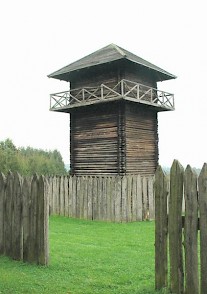
The Latin word limes originally was an expression used by land surveyors and indicated the boundary between two fields, for example the path between two meadows. Several ancient authors, however, use the expression to describe the outer frontiers of the Roman empire.note Modern scholars use the word in an even wider sense to describe several aspects of the imperial system of defense, which includes tactical and strategic aspects, the diplomatic and military means, fortifications, economic means, religion, and so on.
If there is still a restriction in the usage of the word limes, it is the period: although the empire always had its defenses, when scholars speak about "the limes", they usually mean the period between, say, 40/50 and 260/280. During the reign of Augustus, the empire was believed to be continually expanding, although after the disaster in the Teutoburg Forest (9 CE), Augustus' intended successor Tiberius accepted a halt to the expansion in Germania; as emperor, Tiberius accepted the Rhine, Danube, and Euphrates as the boundaries of the Roman world. The first permanent defenses were constructed during the Claudian army reforms (41-54). The system was further developed in the following century, and functioned perfectly until the mid-third century, when stronger Germanic tribes and the rise of Sasanian Persia forced the Romans to rethink their strategy. By the time of Constantine I the Great (306-337), a system of defense in depth had replaced the classical limes.
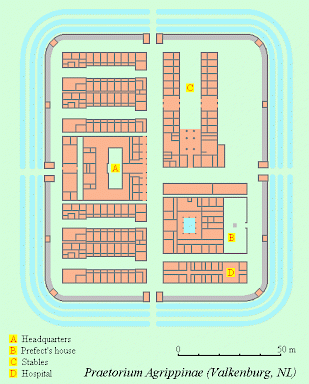
In spite of the standardization of, for example, the layout of the fortresses and forts, it would be a misunderstanding that there ever was one limes system of defense. There was a difference between the solid limes of Britain ("Hadrian's Wall"), and the more open system of forts in Syria. Still, there are some similarities.
The most important one is the easiest to ignore: the grand strategy of the empire was, on the whole, defensive. The Sahara, Euphrates, Danube, and Rhine were natural frontiers, and it was exceptional when the Romans launched new campaigns of conquest. If territory was added, it was to shorten the frontier (e.g., the conquest of the Agri Decumates between Rhine and Danube), or to improve a vulnerable part of the frontier (Mesopotamia to protect Antioch; Arabia Petraea to protect the road from Damascus to Alexandria). The exception that proves the rule is Trajan's conquest of Dacia.
The basic principle of defense was deterrence: wherever the enemy attacked, he would always find a professional, heavily armed Roman force that often outnumbered him. Except for the desert frontier, the limes usually consisted of a clear line where the enemy had to stay away from (e.g., Hadrian's Wall or the river Danube). In his Annals, the Roman historian Tacitus tells an amusing story about two Frisian leaders who wanted to settle their tribe on a river bank opposite the Roman defenses, got into troubles with the army, visited Rome to request permission from the emperor Nero, but went home empty-handed.note This combination of force and diplomacy must be representative for the system as a whole.
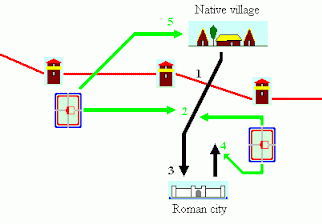
However, sometimes the line was attacked (#1). The soldiers in the watchtowers signaled the invasion to the nearby forts. The watchtowers itself were lost, but the invaders would immediately have to face with Roman forces from nearby forts (#2). Almost always, this was sufficient to deal with the situation. If the attackers were able to reach and loot a city (#3), they would be massacred on their way home (#4). The final act of every attempt to attack the empire was Roman retaliation against the native population (#5).
Usually, Roman auxiliary troops were sufficient to deter any group of barbarians - as the people outside the empire were called - and cope with those savages who did not understand. Only rarely was it necessary to employ the legions, the backbone of their army. Still, they were the ultimate weapon.
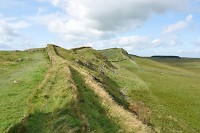
We can discern two main types of military base:
- Castra: the fortresses of the legions. At the end of the reign of Trajan (98-117), there were thirty legions in twenty-eight bases. Almost all of these were close to the border, at some distance of each other.
- Castella: the forts of the auxiliary troops, which were usually infantry, sometimes cavalry, and sometimes mixed units. Typically, they were no less than twenty kilometer from each other. Along the road between the castella were watchtowers.
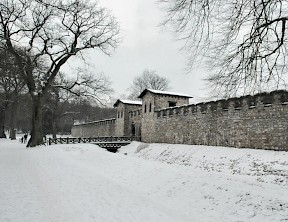
The eldest fortifications that can be called limes were probably ordered when Caligula visited the Lower Rhine area in 39/40 (more...). Not only were several castella built (e.g., Praetorium Agrippinae), but we also know that a couple of years later, the Roman general Gnaeus Domitius Corbulo constructed a line of simple wooden watchtowers along the river. The combination of a line that had to be defended (the Rhine), castella, watchtowers and a legionary base (Castra Vetera) was finished by the mid-first century.
In the second phase of the development of the limes, the road along the frontier was fortified. In Germania Inferior, this happened in 99/100, when Trajan visited the area. A dike along the Rhine marked the boundary between the empire and the barbarians. In a later stage, a palisade could be added, and the wooden towers would be replaced by towers made of stone. This happened in Germania Superior, where a straight line of fortifications protected the valley of the Neckar. During the reign of the emperor Septimius Severus (193-211), the wooden forts were on many places replaced by forts made of stone. The final stage of development was a stone wall: the classic, and earliest, example is Hadrian's Wall in northern England.
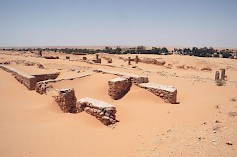
In the east, the limes consisted of castra, castella, and watchtowers only. There were many nomadic tribes and the construction of a palisade or a stone wall would have had unacceptably grave economic repercussions. Because the Euphrates was a clear frontier that was recognized by Rome's eastern neighbor, the Parthian Empire, this was not a big problem.
However, when Lucius Verus (161-169) occupied land east of the Euphrates, a more elaborate system became necessary in Mesopotamia and in Syria. Advanced military posts turned out to be the solution. Nomads would find protection, and would find themselves controlled, in every oasis in the eastern desert. According to the historian Ammianus Marcellinus, the system was called "inner" and "outer" limes, the inner one being the road along the official border, the outer one being the network of outposts.note Along the Sahara, a similar system was used, but ditches were added, and in the Limes Tripolitanus, waterworks were included.
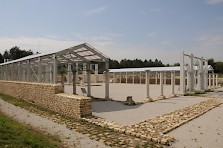
The limes as it existed in the east in the late second and early third century was in fact a precursor of the later system of defense in depth. In late Antiquity, the Romans had an army of limitanei, "borderers", and a cavalry army of comitatenses, which occupied positions in the hinterland.